News
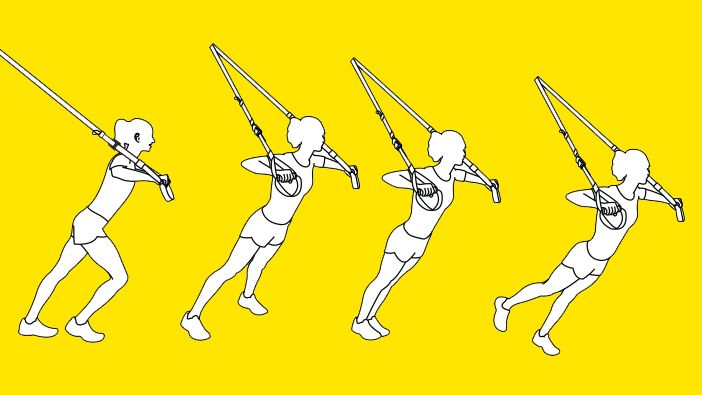
Stability Principle Progressions, Ask the Professor
Strength Performance Network recently caught up with Chris Frankel, TRX Director of Human Performance at the 2010 NSCA National Conference in Orlando, Florida. In the video, Chris provides a great example of how to break down a standard movement (here, the TRX Chest Press) and challenge various muscle groups simply by making a few modifications to your foot position.
This is what we call the Stability Principle™, which involves the relationship between your center of gravity (COG) and your base of support. Short definition: Stability is maximized with a large base of support and the COG positioned in the middle of the base. As the base of support decreases or the COG moves outside the base of support, stability decreases.
First ProgressionChris illustrates the Stability Principle™ by having the athlete first perform a TRX Chest Press in an offset stance. If you're new to exercise or working with an individual who is deconditioned or unstable, this should be the starting position. Using an offset stance during the TRX Chest Press puts the emphasis on the lower body exercise. If you change your mental approach to the movement, you can make this an upper body exercise that puts more emphasis on your chest, shoulders and arms.
Second ProgressionTo increase resistance with more stability, bring the forward foot back into a wide stance. This is the second progression. The body angle is in a deeper position, and a wide stance provides good stability while engaging the core further.
Third ProgressionTo decrease stability at the same body angle (resistance), bring the feet close together for the third progression. Now the COG rests on a smaller base of support, and active core control is required to maintain stability.
Fourth ProgressionThe last progression is a single-leg stance, which reduces support and is appropriate for more advanced users. Many people find the movement easier to perform on one foot or another. It’s important to note these discrepancies and work to correct them. For all of the progressions, experiment with foot placement until you find the optimal range of movement and resistance level.
By using Stability Principle and a four-step progression as outlined above, Chris shows us how you can take what is typically just a chest exercise and turn it into a core and hip exercise, with an additional focus on resisting rotation. You can apply this approach to any Suspension Training bodyweight exercise.
Get your TRX Suspension Trainer here.
As the resident TRX Professor, Chris Frankel draws from over 25 years of experience as a strength and conditioning coach. He earned an MS in Exercise Physiology from the University of New Mexico, where he is currently completing his doctorate in Exercise Science. Before taking the position of Director of Programming at Fitness Anywhere, Chris was an instructor in the Department of Health, Exercise and Sport Sciences at the University of New Mexico.
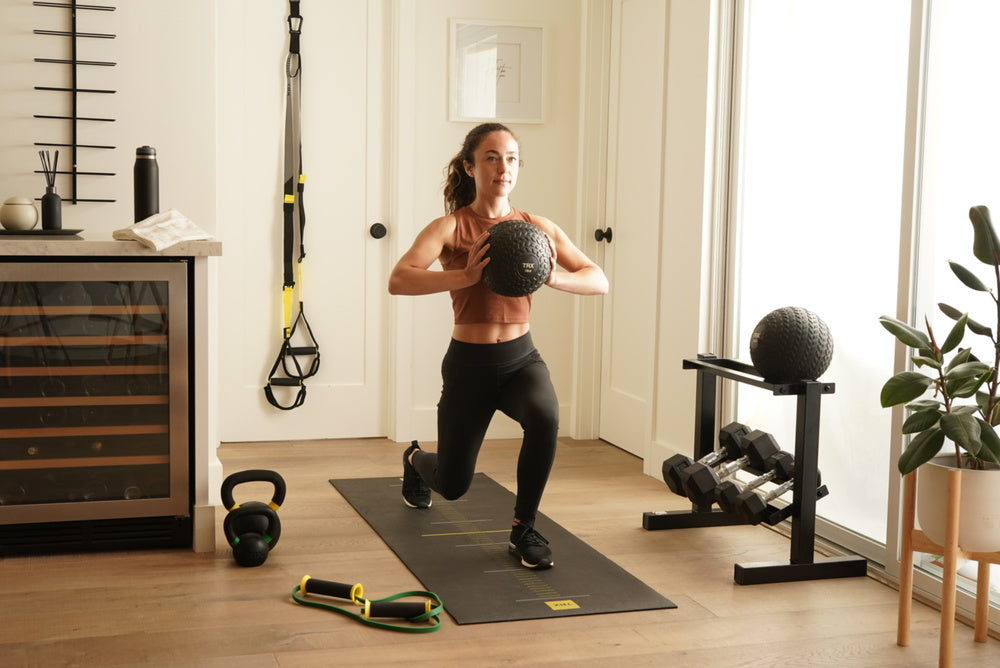
Slam Your Way Into Circuit Training
TRX Training
“Aren’t they the same thing as medicine balls?” asked the unassuming gym-goer on more than one occasion. Quite the contrary. As many of us know, these two classic pieces of functional training equipment have some similarities - but it’s their singular distinction - the fact that slam balls don’t bounce - that makes all the difference when the rubber hits the road [errrr gym floor].
Originally referred to as “d-ball” for dead ball, slam balls literally drop dead when slammed on the ground. Thus, slam balls add an additional element of work to your training, as you have to hinge, squat, and thrust the slam ball back up off the floor, whilst maintaining a strong core and proper form. For these reasons, it is no surprise that slam balls have become a popular addition to the rapidly expanding high intensity training (HIT) programs that are popping up everywhere.
Below are some fun and effective exercises that can be done on their own or integrated into your circuit workouts.
Front Slam (slam ball’s primary use): Simply pick the ball up and slam it to the ground. When performed correctly, this movement engages your whole body and is the perfect exercise for building speed and explosiveness. We like to use this move to teach deceleration, like landing from a jump. Just picture your worst enemy and blow off some steam.
Start with the ball on the floor between your feet; body in an athletic “ready” stance, feet about shoulder width apart
Keeping a neutral spine, squat down and pick up the slam ball
As you come up from your squat, use strength in your legs and hips to thrust and push the ball above your head - reach as high as you can, elbows fully extended, ball directly overhead and momentarily find your tall plank.
Initiate the move by driving your hips back and slam the ball down to end back in either a hinge or squat position, you can hold this position for a second to check form, you don’t have to worry about the ball bouncing back up and hitting you in the face!
Keep the core engaged and spine tall as you pick the ball up from the floor and repeat
Slam Ball Jump: Think front slam with some added oomph.
Start with the ball on the floor between your feet; body in an athletic ready stance, feet about shoulder width apart
Keeping a neutral spine, squat down and pick up the slam ball
As you come up from your squat jump vertically, pressing the ball as high as possible overhead, like rebounding a basketball or blocking in volleyball
As you come down from your jump, slam the ball on the floor and finish in a hinge or squat position
Keep the core engaged as you pick the ball up from the floor and repeat
Slam Ball Lunge: Step up your lunge game by adding a slam ball for some extra work.
Stand in an athletic stance, holding the slam ball at your chest
Step forward, gently lowering your back knee towards the ground
As you step forward fully extend your arms in front of you
Be sure to keep your knee in line with your toes, shin of your front leg vertical
Drive back to original position, maintaining a tall torso and repeat with opposite leg
Slam Ball One Arm Chest Pass: Grab a partner for this one - you should be about 4 - 6ft away from each other.
Stand feet shoulder width apart in an athletic stance, with the ball at your chest
Pivot on your left foot while rotating your shoulders and hips to the right.
Moving your hips and shoulders together like a cylinder, rotate rapidly back to the left, push the ball out towards your partner with your right arm Your partner will catch the ball, do the same movement and push it back to you
Continue these movements for a few reps and then switch sides
Slam Ball Side Slam: Who doesn’t love oblique work?...Or at least the after effect.
Start with the ball on the floor between your feet; body in an athletic ready stance, feet about shoulder width apart
Without rounding your back, squat down and pick up the slam ball
As you come up from your squat, use strength in your legs and hips to thrust and push the ball above your head
Rotate to one side, pivoting your back foot
As you pivot, slam the ball down at your side and towards the inside of your front foot
Bend your knees and sink down as you slam the ball down
Without rounding your back, pick up the slam ball, maintaining the same body position, return to start and repeat on the other side
Click here to learn more about TRX Slam Balls (Note: discounts on TRX Slam Ball Bundles available for commercial customers.
BRING TRX EDUCATION TO YOUR COACHES WITH THE TRX FUNCTIONAL TRAINING COURSE
Ensure your training team is using the standards of movement to properly incorporate Functional Training Circuits into their Personal Training, Small Group, and Group sessions.

Spring Into an Outdoor Workout Routine
Moments before she took the Super Bowl half-time show stage at NRG Stadium—arguably the biggest performance of her career—Lady Gaga was hammering out reps backstage with a TRX Suspension Trainer. In true Gaga fashion, she executed her rows in a sparkle Versace bodysuit, matching high-heeled boots, and full makeup.
As an internationally-known pop star, Lady Gaga can make outrageous requests for whatever fitness tools she wants. If she had asked for a stair climber and a rack of weights, she would have received them. Instead, she was using a lightweight, effective tool that was designed travel anywhere. Now that spring has sprung, it’s the perfect time to make like Gaga and take your workout with you on the road.
The TRX Suspension Trainer is popular in gyms, homes, and personal training studios, but you can use it just as effectively at the beach, in a park, or wherever spring days take you. In fact, this is a tool that was built for workouts on the go.
TRX founder and inventor Randy Hetrick was looking for a way to maintain peak physical condition while on deployment as a Navy SEAL when he created the first TRX Suspension Trainer. Hetrick MacGyvered the prototype from a jujitsu belt and parachute webbing. Over the last 20 years, his design had evolved into the tool you see today. The idea that you should be able to use the TRX Suspension Trainer anywhere has resonated with pro athletes, pop stars, and fitness enthusiasts alike.
The easiest way to set up for an outdoor workout is to attach your TRX Suspension to a well-fixed horizontal bar or beam, like a pull-up bar. If you’re attaching your Suspension Trainer to a vertical structure for anchoring, use the TRX Xtender to wrap around the pole or column, and pull the anchoring loop through the larger loop. Pull the loop taut, and clip in the carabiner. Make sure that the bottom of the TRX Suspension Trainer's Equalizer Loop is six feet off the ground or that the bottom of the foot cradles are three feet off the ground, and weight test the straps before starting your workout.
If you want to focus on core strength and stability, the TRX Rip Trainer is similarly easy to set up for an outdoor workout. Just wrap the bungee cord around a vertical fixed point, column, or beam, and use the carabiner to attach the Rip Trainer to itself.
Spring days are perfect for runs, walks, and swims, and TRX makes it easy to complement your outdoor cardio workout with strength and balance training. Thousands of people worldwide use the Suspension Trainer outside every day. Show us on Instagram how you use your TRX Suspension Trainer and/or RIP Trainer outside by tagging @TRXTraining and #TRX. You might see your photo featured on our Instagram account.
Blog photo credit by LindseyKirbyPhotography
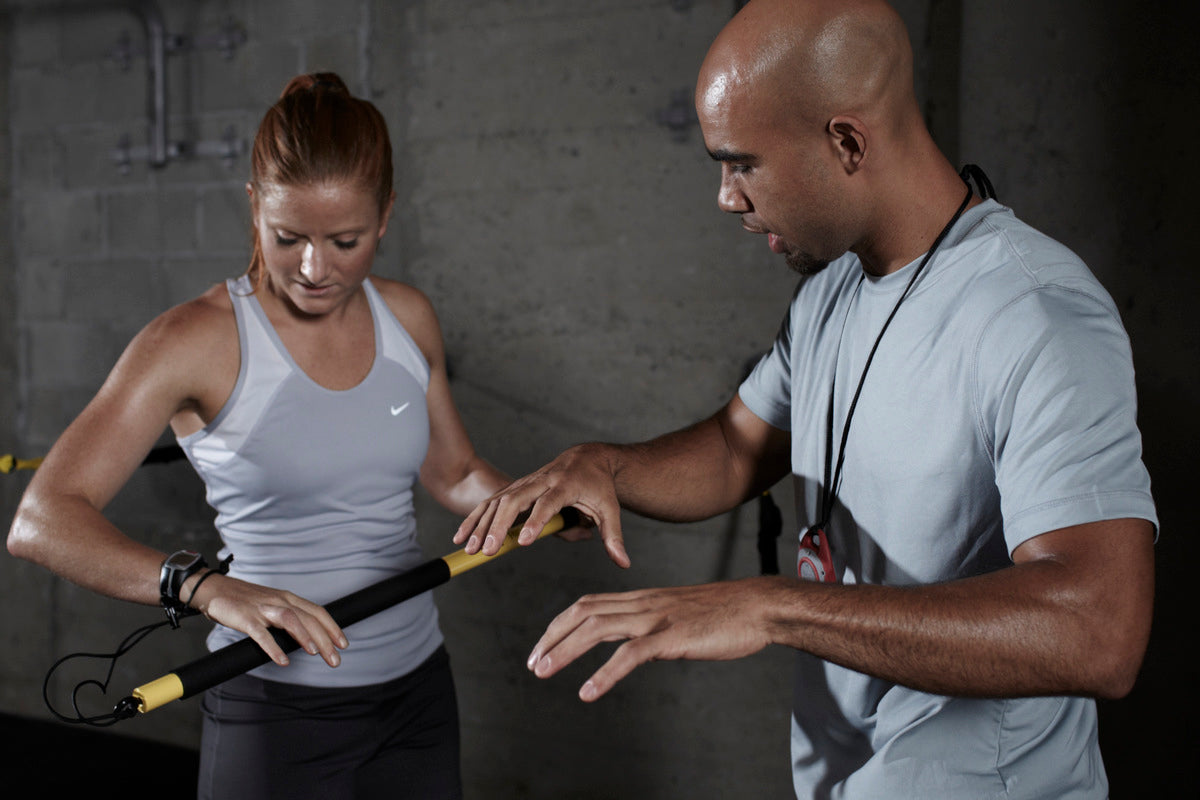
Sleep & Recovery
“Some of us may have grown up believing the fallacy “No Pain, No Gain,” but the risks of overtraining include illness, injury, and lost training time. Of course, you should expect to be tired after a hard workout, but you should recover by the following morning.”
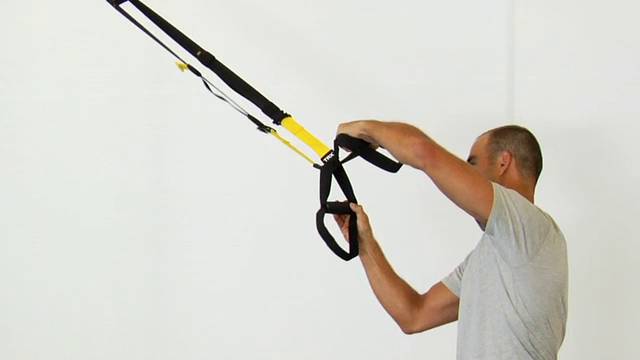
Single Handle Mode
Looking to up the ante with your TRX Suspended Planks, TRX Power Pulls, and TRX for Yoga poses? Before watching the video on Single-Handle Mode setup, take our quick form assessment quiz for personalized tips on advancing these moves safely. Working in Single-Handle Mode allows one limb (either arm or leg) to be suspended while the other limb is free. Training in Single-Handle Mode helps build stability in yoga poses such as TRX Dancer Pose and allows you to resist rotation in exercises like the TRX Single Arm Row. Properly placing the TRX Suspension Trainer in Single-Handle Mode is key to training both safely and confidently. Watch this video to learn how
TAKE OUR TRAINING QUIZ
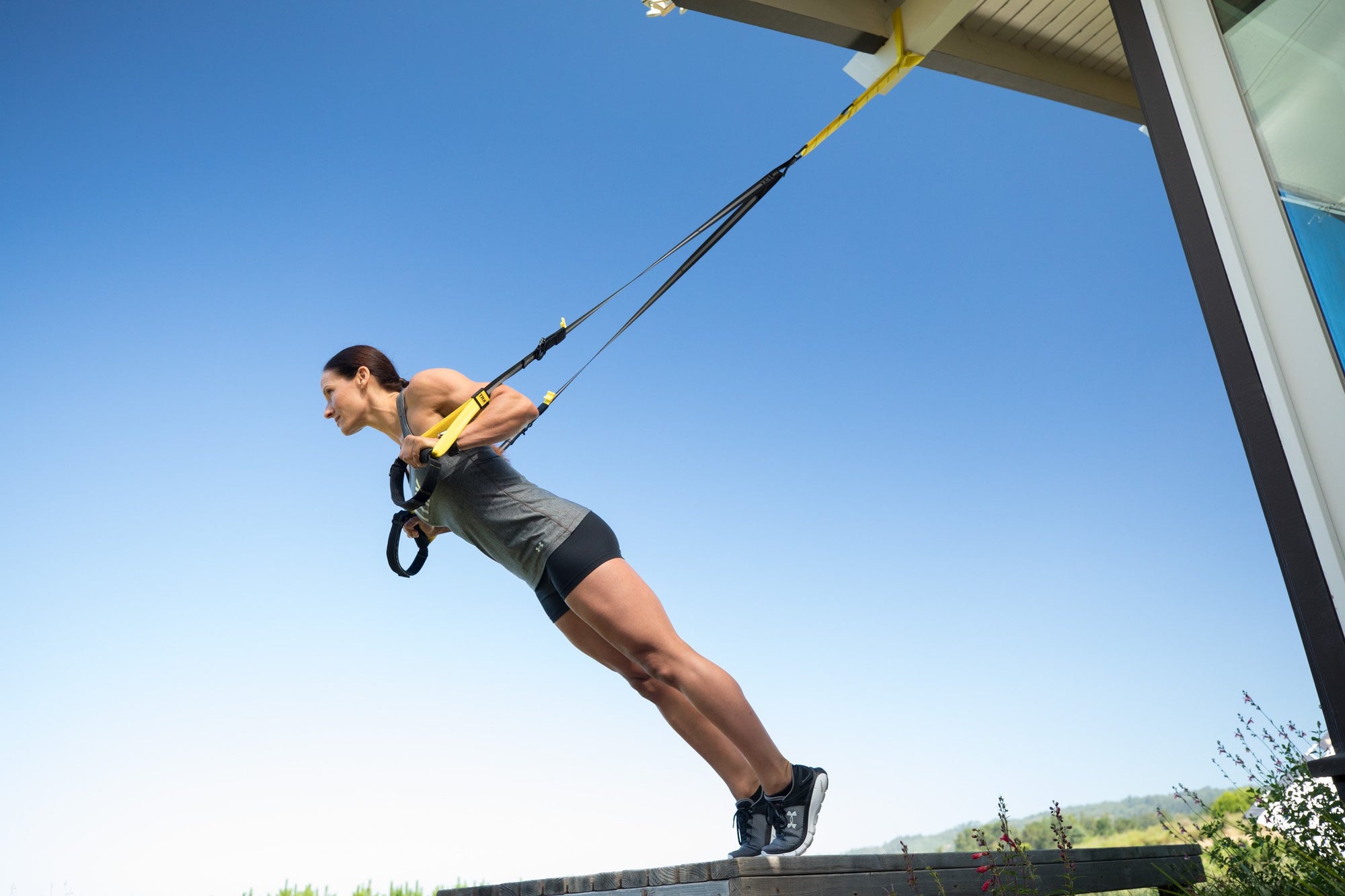
Short Circuits Part 3 - Getting The Most Out Of Your Training (On Busy Days) with Intentional, High Quality Workouts
This is the third article of a three part series aimed to maximize your workout with the minimal time we each have in our days with today’s demanding lifestyles.
If you missed Part 1 of this series, where we discussed the art of ‘choosing wisely’ and the importance of exercise selection and sequences in yours or your clients workout, check it out here. Then in Part 2 we discussed tempo and weekly scheduling.
The next step to consider when building your short circuits is to...
4) "Be Consistent, Not Heroic"
Even the most highly motivated people have days when they don’t feel like exercising or when their calendar is particularly jam-packed. We feel you, but don’t skip these sessions! Instead, shorten your warm-up and use your first couple of sets on the Suspension Trainer to ease into your workout with full range of motion and low velocity in unloaded or lightly loaded movements. Once you get going, you’ll likely want to do more. If so, finish your planned exercises and then do some extra accessory exercises like bicep curls or Y-to-T flys, or some mobilizations that target the main muscle groups you just worked. The key is making sure you do something deliberate and high quality multiple days a week, even when you feel like doing nothing. As our good friend and co-creator of the TRX Duo Trainer Dr. Kelly Starrett often says, “Be consistent, not heroic.”
Try out this sample Short Circuit, and start implementing these principles today!
Forward Lunge w/ Y-Fly x 10 (alternating legs)
Squat Row x 10
Chest Press x 10
Lateral Lunge x 10 (alternating sides)
PowerPull x 10 each arm
Atomic Push-up x 10
Hamstring Curl x 10
Side Plank 4x10s hold each side
Want to learn more about being an effective Coach? Get started with TRX Professional Education. If you've already crushed the TRX Education Journey and you're ready to dive into exercise selection, sequencing, and programming, check out the TRX Advanced Group Training Course - TRX Advanced Group Training.

Setting Up Your TRX S-Frame for Functional Training
Architects have an axiom: form follows function, meaning the design of a structure should be determined by its purpose. The TRX S-Frame is designed to be exactly that, a place where you and your clients or athletes can indulge in functional training in its truest sense.
Whether you train indoors or out, there are a variety of ways to set up your TRX S-Frame as a complete functional training zone for exercises specific to daily activities. In this video, we show seven stations at Park Road Fitness in Burlingame, California, including two TRX stations and five additional setups. Want a customized S-Frame workout plan? Take our quick assessment quiz to get training recommendations tailored to your goals and space constraints.
TAKE OUR TRAINING QUIZ
Station 1 - TRX Mountain ClimbersStation 2 - Battling RopesStation 3 - DipsStation 4 - KettlebellsStation 5 - Heavy BagStation 6 - Pull-upsStation 7 - TRX Atomic Push-ups and TRX Overhead Squats
If you’re working in a group or boot camp setting, divide your athletes into small groups and have them cycle through the above stations in a circuit. You can also train individual clients or athletes on the TRX S-Frame, simply by having him or her move from one station to the next in the prescribed amount of time.
The above video illustrates just a few of the ways you can create a functional training space with the TRX S-Frame; the options are endless.
“We utilize the TRX Suspension Frame in so many ways, whether it is with the TRX Suspension Trainers, heavy bag, arm slings, tubing and more,” says William Hanson, owner of Aspire Fitness Studios in Cleveland, Ohio. “We use the S-Frame in nearly every training session we have.”
Other facilities that have purchased a TRX S-Frame are truly putting it to the test with their hardest-hitting athletes.
“Our professional hockey players love to perform hockey-specific drills on our 30-foot giant TRX S-Frame,” says Noel Morgan from Fitness 4 Success, Inc in Vaughan, Ontario, Canada. “Putting the TRX into single handle mode, hockey players are able to work unilaterally on the mechanics of shooting and stick handling, while improving their core strength, coordination and balance. The S-Frame is a terrific compliment to our program and facility.”
“The S-Frame is the bomb!” says Josh Hubby from P4L Fitness in Murrieta, California. “Not only does it look sweet and add a unique character to our facility, it also allows us to do all the TRX work plus use bands and full body exercises on it. It is very functional for group and private training sessions. The exercises on it are so dynamic and challenging, even for the most experienced exercisers.”
Special thanks to Park Road Fitness, located in Burlingame, California. For more on their facility, including a schedule of their upcoming TRX classes, visit www.parkroadfitness.com. If you want to find out more, please contact your TRX sales rep by phone at 888-878-5348.

Rip Training: Principles of Progression
Pete Holman, creator of the Rip Trainer, is back to show you how to maximize your Rip Training workouts with three exercises that map to the three principles of progression we use for Rip Training: Stability, Vector Resistance and Elastic Resistance.
You'll probably recognize two of these as the very same principles that govern Suspension Training, highlighting why these two modalites are so complementary.
In the video above, you'll learn a three exercise sequence, with each exercise illustrating one of the principles of progression:
Rip Press (Stability Principle)
Rip Pitchfork (Vector Resistance)
Rip Strike (Elastic Resistance)
This is a great sequence for you to try at home targeting the anterior chain, the posterior chain and the lateral stabilizers. Stay tuned for subsequent blogs in which we’ll break down each one of these exercises and principles in further depth so you and your clients can take your Rip Training workouts to another level.
Get your TRX Rip Trainer.

Rip Training Interval Workout with BJ Gaddour
BJ Gaddour was at TRX HQ recently to show us some metabolic work using the TRX Suspension Trainer including ladders, circuits, complexes, density training and Tabatas (watch this space for more from him in these areas). An expert on fitness boot camp program design, BJ knows his stuff and kicked our butts. But we had a little treat in store for him as well: an introduction to the Rip Trainer and a 15-minute demo with creator Pete Holman.
"Pete really impressed me with what I think is safe to say is the best new core training tool around," said BJ. "I went to my hotel room that same day and immediately cranked out an unbelievable metabolic circuit using my new Rip Trainer."
Since then, BJ has been playing around with a lot of workouts using the Rip Trainer, and one of his favorites is shown here, the Mad Minute Complex:
Here is a breakdown of the exercises:
Complex #1:1-Rip Trainer Squat to High Row2-Rip Trainer Rotational Single Arm Chest Press3-Rip Trainer Chest Press
Complex #2:1-Rip Trainer Slapshot2-Rip Trainer Axe Chop3-Rip Trainer Overhead Triceps Extension
Complex #3:1-Rip Trainer Squat to Low Row2-Rip Trainer Squat Jump to Overhead Press3-Rip Trainer Alternating Forward Lunge with Chest Press
BJ Gaddour, CSCS, is the co-creator and fitness director for Workout Muse. He is a fitness bootcamp and metabolic training expert who regularly contributes to Men's Health, MSN Fitbie and various other media outlets. For more from Workout Muse, be sure to check out their best-selling app, iWorkout Muse PRO for the iPhone and iPod Touch, which allows you to build custom interval training soundtracks mixed to your favorite music.
